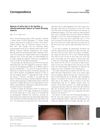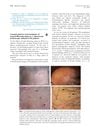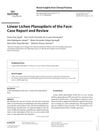Search
forLearn
5 / 6 resultslearn Epidermal Growth Factor
learn Hair Multiplication
extract, clone, and reinsert your own hair cells
learn RU58841
a potent but unapproved and potentially problematic topical anti-androgen
learn Biotin
supplement to help with hair texture and quality
Research
5 / 1000+ results
research Absence of Vellus Hair in the Hairline: A Videodermatoscopic Feature of Frontal Fibrosing Alopecia
Lack of small, fine hair on the front hairline is a key sign of frontal fibrosing alopecia.

research Clinical Evaluation of Alopecias Using a Handheld Dermatoscope
A handheld dermatoscope helps diagnose different types of hair loss effectively.

research Unusual Patterns of Presentation of Frontal Fibrosing Alopecia: A Clinical and Trichoscopic Analysis of 98 Patients
Trichoscopy helps diagnose frontal fibrosing alopecia, even with unusual patterns.

research Linear Lichen Planopilaris of the Face: Case Report and Review
A rare skin condition called linear lichen planopilaris caused itchy red bumps and hair loss on a man's face.
research Trichoscopic Findings of Erosive Pustular Dermatosis of the Scalp Associated with Gefitinib
Reducing gefitinib dosage improved hair loss, but scarring remained.
Community Join
5 / 111 resultscommunity DHT Harms Scalp Microbiome: DHT Itch is REAL
Increased Malassezia and Cutibacterium in the scalp microbiome are linked to higher sebum production and inflammation in androgenetic alopecia (AGA). Treatments include ciclopirox shampoo, benzoyl peroxide shampoo, clobetasol propionate, calcipotriol, minoxidil, finasteride, and dutasteride.
community Creatine Doesn’t Cause Hair Loss: Stop the BS
Creatine does not cause hair loss, despite many users reporting personal experiences of hair shedding. Scientific evidence shows no link between creatine and increased hair loss or hormone changes.
community Accelerated Hair Loss from Creatine
Creatine may cause hair loss in some individuals, especially those on finasteride, despite no scientific link. Personal experiences suggest individual sensitivity to DHT could be a factor.
community UPDATE: The theory that explains everything. Please help me make this big!
Hair loss theory involves 3alpha-hydroxysteroid reductase (3AHD) converting DHT to androstenol. Discussion explores potential treatments and encourages more research.
community My experimental hair loss journey under medical supervision: finasteride/dutasteride, oral/topical minoxidil+tretinoin (3-month progress and hair transplant insights for those considering it)
A 23-year-old discusses their hair loss treatment using finasteride, dutasteride, oral and topical minoxidil, and topical tretinoin under medical supervision. They stress stabilizing hair loss before a hair transplant and plan to continue the regimen for at least 18 months.